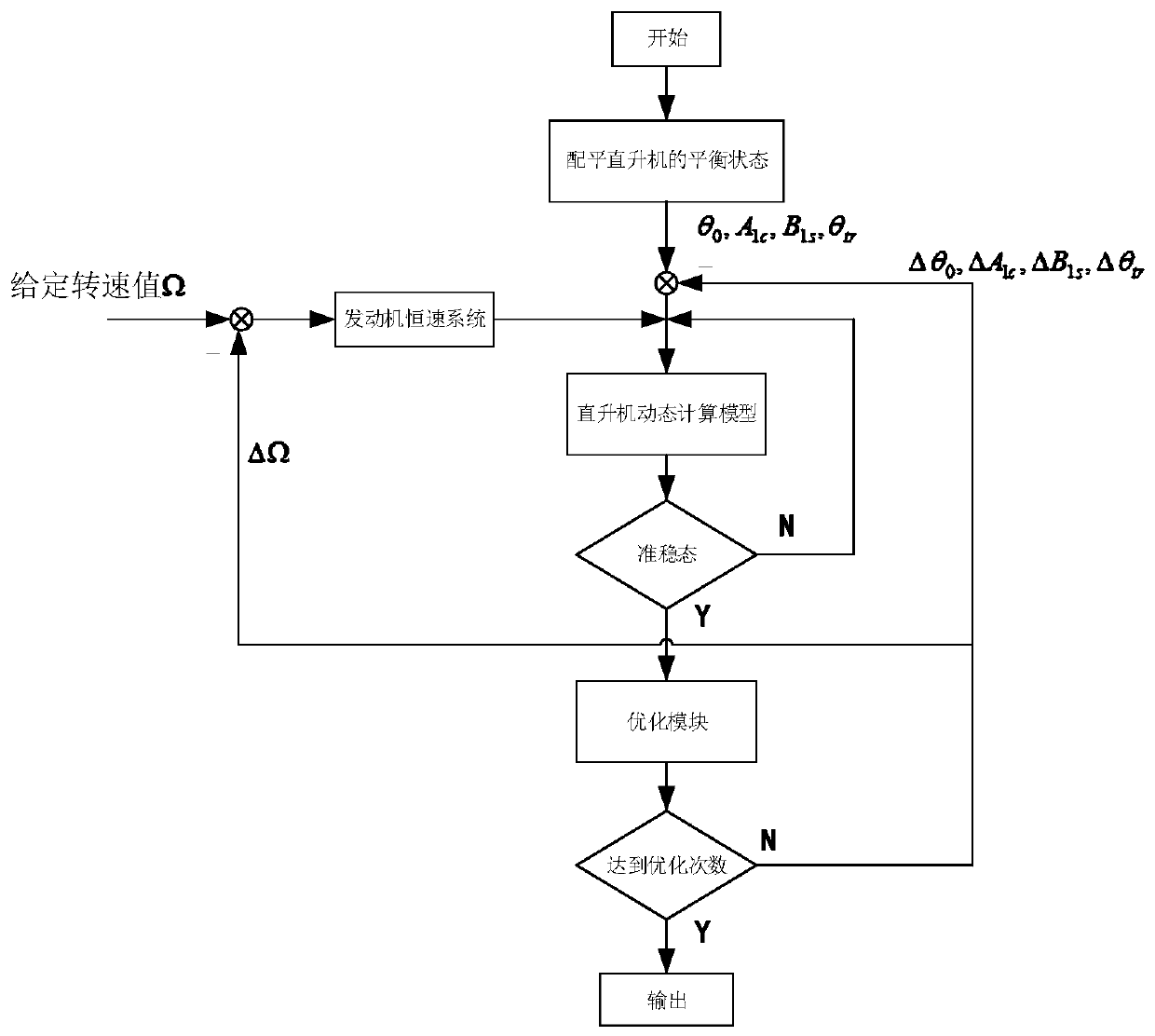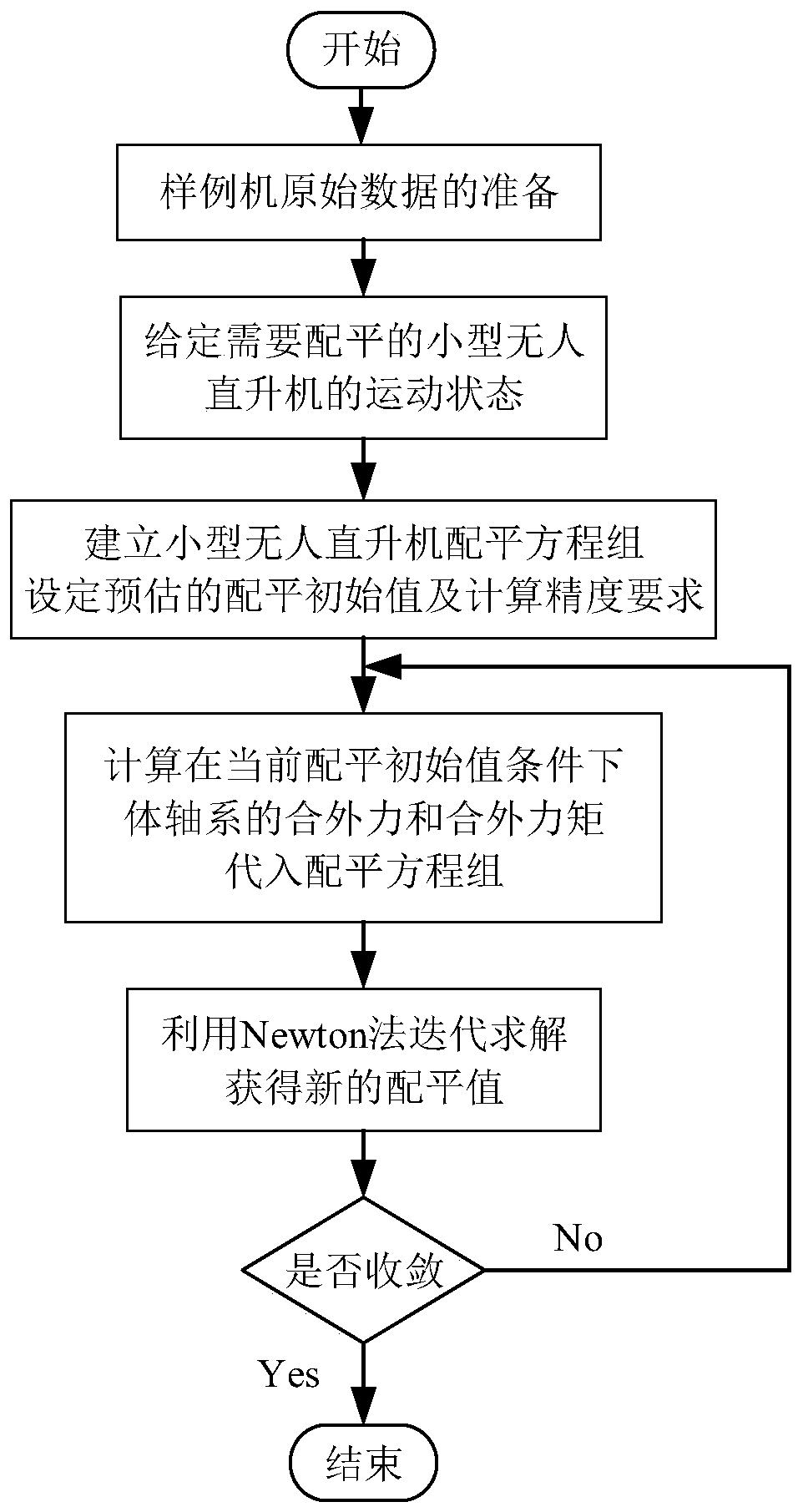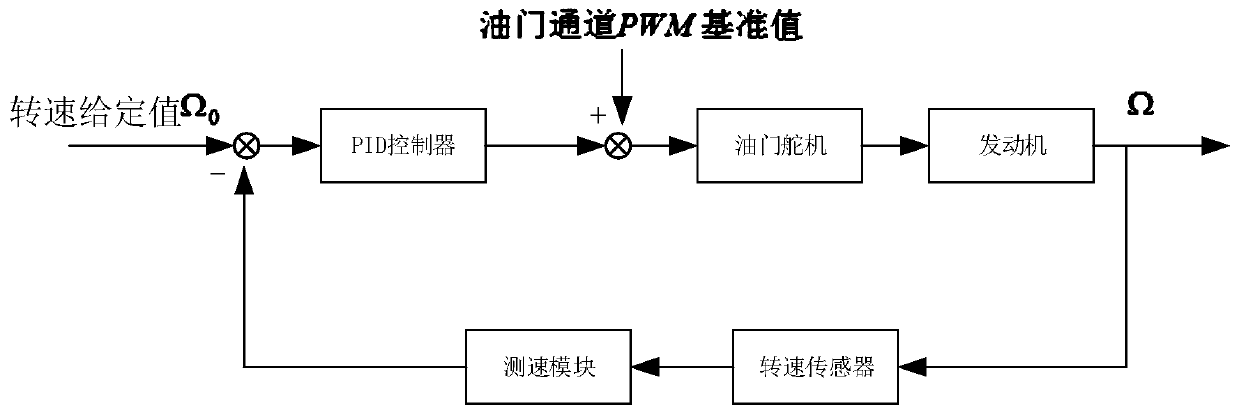A Dynamic Planning Method in Flight Control of Small Unmanned Helicopter
An unmanned helicopter, power planning technology, applied in the direction of adaptive control, general control system, control/regulation system, etc.
- Summary
- Abstract
- Description
- Claims
- Application Information
AI Technical Summary
Problems solved by technology
Method used
Image
Examples
Embodiment 1
[0049] This embodiment discloses a method for power planning in the flight control of a small unmanned helicopter, which specifically includes the following steps:
[0050] S1. Establish a nonlinear model of a small unmanned helicopter: split the helicopter into various components, obtain the dynamic equations of each component, and integrate the force equations of each component to obtain the overall mathematical model of the helicopter, such as formula (1-1) As shown, U=[θ 0 A 1c B 1s θ tr ] T are 4 input control quantities, respectively are the main rotor collective pitch angle θ 0 , main rotor lateral periodic pitch angle A 1c , main rotor longitudinal periodic pitch angle B 1s and the collective pitch angle θ of the tail rotor tr , which are respectively controlled by the PWM control signal δ actually input to the steering gear col , δ lat ,δ lon ,δ tr Control; X=[u v w p q r φ θ ψ a 1 b 1 ] T are 11 state variables, u, v, w are the flight speeds along t...
Embodiment 2
[0087] The invention discloses a power planning method in the flight control of a small unmanned helicopter, which specifically includes the following steps:
[0088] Firstly, the stable flight state of the helicopter is determined, and the trim calculation of the nonlinear model of the helicopter is carried out to obtain the trim value to achieve the stable flight state.
[0089] Input the trim value into the dynamic calculation model of the helicopter. After the helicopter is in a stable state, the optimization calculation can be performed, that is, the optimization module is entered.
[0090] The optimization problem in the optimization module is a nonlinear optimization problem. The objective function is the calculation formula of the total required power of the small unmanned helicopter in this stable flight state. The nonlinear constraints are the forces and The magnitude of the torque remains unchanged, and the sequential quadratic optimization method is used to solve t...
Embodiment 3
[0099] Similar to Embodiment 2, this embodiment will follow the figure 1 The optimization flowchart shown in the simulation in the forward flight state, take the stable flight state of the forward flight speed v = 20m / s for optimization, the same as the process of hovering, at the rated speed Ω = 143.17rad / s, The control angle and attitude angle required for the forward flight 20m / s flight state are calculated by the trim calculation program, and input into the dynamic calculation model of the helicopter, and the optimization starts after the model state is stable.
[0100] After 3 rounds of optimization, the program obtains the global optimal solution. The final optimization results are shown in the table below. The speed optimization rate is 4.47%, and the demand power optimization is 10.11%. The effect is obvious.
[0101] Table 2. Optimization result parameter table
[0102]
PUM
 Login to View More
Login to View More Abstract
Description
Claims
Application Information
 Login to View More
Login to View More - R&D
- Intellectual Property
- Life Sciences
- Materials
- Tech Scout
- Unparalleled Data Quality
- Higher Quality Content
- 60% Fewer Hallucinations
Browse by: Latest US Patents, China's latest patents, Technical Efficacy Thesaurus, Application Domain, Technology Topic, Popular Technical Reports.
© 2025 PatSnap. All rights reserved.Legal|Privacy policy|Modern Slavery Act Transparency Statement|Sitemap|About US| Contact US: help@patsnap.com



